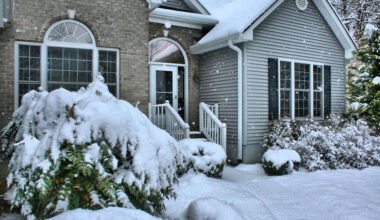A well-kept living area reflects consistency and care. If you live in Sandy, Utah, that becomes even more important. Shifts in weather, dry heat, snowfall, and sudden cold snaps all place added pressure on indoor systems, surfaces, and essential utilities. Small issues can quickly grow if overlooked. Whether you’re new to the area or have been settled for years, it helps to know when to take action yourself and when to bring in local help.
Here are some straightforward ways to keep everything in great shape so it feels safe, clean, and reliable year-round:
Start with a Simple Checklist
Planning out your regular checks helps you stay consistent without getting overwhelmed. Begin by breaking tasks into short- and long-term goals. Monthly routines can include testing smoke alarms, inspecting weather seals on doors, and switching out air filters. For quarterly planning, clean vents, wipe down fans, and walk through each room to look for small signs of wear. Once a year, set aside time to inspect items such as caulking, heating units, and surface cracks. Try keeping this list somewhere visible. Apps or basic calendars can also help you track progress. A bit of structure can save you money and time later, especially in places where seasonal shifts are sharp and sudden.
Get Ahead of Water-Related Issues
Homes in Sandy, Utah, are especially vulnerable to water issues during the cold months. Pipes can freeze or burst when temperatures drop fast, and older fixtures often start leaking. If you’re searching for experts in plumbing Sandy, Utah has many contractors to suit your needs. A local contractor can offer a wide range of support, like clearing clogs, installing tankless systems, upgrading fixtures, and even setting up gas lines. They can also handle water heaters, remodel support, and same-day service for urgent situations. It helps to know that reliable support is available when needed. Acting early prevents interior damage and reduces stress. Make time to walk through your kitchen and wash areas to check for early signs of issues.
Keep Heating and Cooling in Check
Your HVAC setup plays a major role in comfort and cost. Dirty filters and clogged ducts increase workload, driving up utility bills. Clean or replace filters every 6–8 weeks, especially during high-use seasons. Check vents for dust or obstruction. Listen for rattling, strange smells, or uneven airflow. Those can signal that service is needed. Schedule two inspections a year—spring and fall work well. Some local teams even offer seasonal tune-ups and safety checks. Try not to skip this. Heating and cooling costs rise quickly when something’s off. And in places where summer highs and winter lows can be extreme, it’s better to handle minor tasks before they become expensive fixes.
Watch for Signs of Trouble Overhead
When it comes to overhead surfaces, minor damage can quickly lead to bigger problems. Look for missing pieces, sagging spots, or any signs of leaks inside your rooms. Don’t forget to check around vents, skylights, or ceiling corners where water may sneak in unnoticed. If you spot discoloration, peeling, or stains, don’t wait it out. Addressing surface wear early helps reduce long-term costs and keeps your space dry. Some local teams can check it for you, especially after a strong storm or snowfall. The seasonal mix of rain, wind, and snow makes regular inspection worthwhile. The goal is to stay ahead of moisture and not deal with it after it’s spread.
Walk the Perimeter Every Few Weeks
Every few weeks, take 15 minutes to walk around the structure. Look at base corners, walls, joints, and any places where materials meet. Pay attention to changes like cracks, gaps, or leaning surfaces. These changes may point to shifting soil, water intrusion, or aging structures. The soil and weather conditions make this a smart habit, especially after freeze-thaw cycles in winter. Caulking and sealing can handle small issues. If you catch them early, it’s cheaper and quicker to patch. You’ll also want to look near the edges of windows and entrances. Air leaks from those areas raise heating bills and can lead to damp interiors.
Schedule Seasonal Cleanups
A few simple tasks each season help prevent bigger problems later. In the fall, clear out leaves from your walkways and check for buildup near entry points. Before winter, drain outdoor hoses and protect exposed lines from freezing. During spring, wash surfaces with mild soap and water, and open windows to air out stale air. Summer is a good time to tighten anything loose, like screws, rails, or handles. Even a small to-do list keeps things in better shape. Changing weather patterns mean timing matters. Set reminders around major holidays or weather shifts so you remember. Regular cleanups cost less than emergency fixes and keep your space looking fresh all year.
Caring for your space doesn’t have to be overwhelming. Building small habits, like inspecting rooms, checking equipment, and cleaning on schedule, adds up over time. In places with shifting weather and active seasons, regular care is even more important. Staying aware of your surroundings and catching early signs helps you avoid last-minute fixes or large costs. You don’t need expensive tools or endless free time to stay organized. Just a clear plan and consistency. From checking appliances to handling small tasks as they pop up, this is about making your living area reliable and comfortable on your terms. It’s your space, and your rules keep it in shape.



